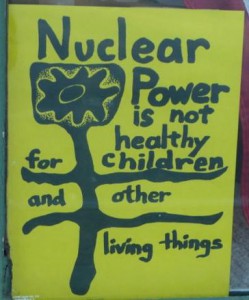Introduction
Pandora’s Promise is a documentary produced in 2013 by award-winning director Robert Stone. Robert Stone had made previous anti-nuclear documentaries, but this one was different. Instead, this one made the case that nuclear energy is actually safer and greener than coal, and was directed at environmentalists to make them reconsider nuclear energy as a possibility for solving the world’s energy problems. This blog post will provide my review of this movie.
Many Opinions, Few Facts
I found the movie visually appealing and interesting, but difficult to follow in terms of the arguments the director was making. For example, a journalist was interviewed who said he used to be on the anti-nuclear side, but now he changed. He said the reason he changed was that he spent a lot of time with physicists and finally learned how nuclear energy really works. He was very passionate, but he was not convincing. He didn’t explain what it is he learned from these physicists that made him change his mind.
arguments the director was making. For example, a journalist was interviewed who said he used to be on the anti-nuclear side, but now he changed. He said the reason he changed was that he spent a lot of time with physicists and finally learned how nuclear energy really works. He was very passionate, but he was not convincing. He didn’t explain what it is he learned from these physicists that made him change his mind.
In fact, the movie was not good about putting titles visually on the screen for the people the director was interviewing. I was unfamiliar with these people so it was hard to keep track of what the points were supposed to be about. A lot of the movie was comprised of people remembering past nuclear activism and issues, and a lot of history is presented. But there are not a lot of clear facts. In fact, it is debated in the movie as to how many people died at Chernobyl. Two totally different numbers are cited, but not attempt is made to figure out the correct number.
Analysis: Is Nuclear Really Safer?
It is hard to watch this movie and not consider the situation that if something goes wrong with a nuclear reactor and there is a meltdown or explosion, it could be especially catastrophic. The opinions expressed that suggest that nuclear isn’t as dirty as once thought, or that other fossil fuels are not as clean as once thought, are probably based in fact. But ultimately, the point made early in the movie, that even Fukashima, which was run well and built solidly, ran into a problem after a freak tsunami. Every single situation cannot be prevented, and one huge mistake with a nuclear power station could be devastating. This cannot be said for fracking, coal extraction, or other types of “dirty” energy production.

Conclusion
Although this movie was visually stimulating, and provided interesting history and opinions, I do not think it met its goal of being convincing about its point, which is that nuclear energy deserves a second look and could possibly solve our energy problems. Since the earlier eras where there was a lot of protesting against nuclear energy, it has been revealed that most energy production is dirty, not just nuclear. Simply saying that nuclear is not as bad as we thought, or the other energy generation approaches are worse, does not lead to the idea directly that we should wholly embrace nuclear energy.